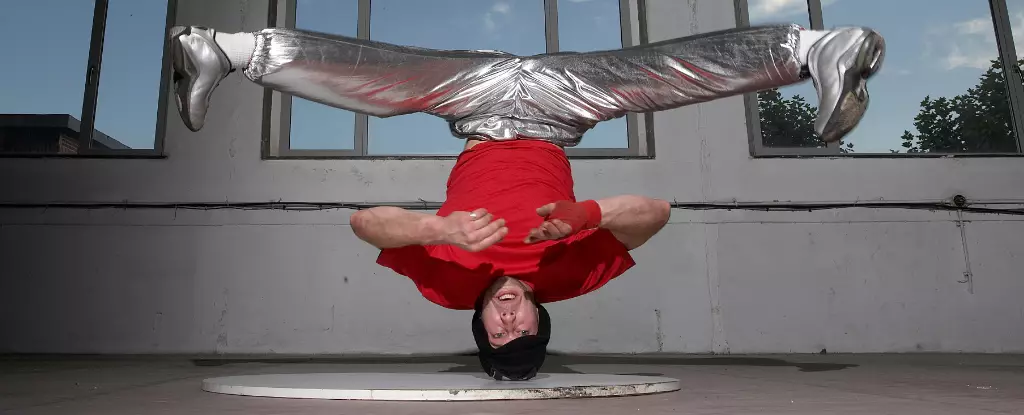For many people who grew up in the 1990s, *Coneheads*, the comedy featuring alien creatures with distinctive cone-shaped heads, remains a beloved film. Interestingly, this peculiar head shape is not only a hallmark of fictional aliens but has also made its mark in the physical world, especially among the breakdancing community. A recent 2024 medical report introduced a novel medical issue termed “headspin hole” or “breakdancer bulge,” which underscores the unique physical challenges dancers face in this high-energy and acrobatic art form. After nearly two decades of spinning on their heads, a breakdancer found themselves facing this peculiar consequence.
The phenomenon described as a headspin hole arises after extensive head-spinning practices. This condition results from the body’s adaptive response to repetitive trauma, wherein a cone-shaped mass forms at the apex of the skull. The epicranial aponeurosis, a tissue layer that acts like a tendon, experiences thickening due to continued stress. Just underneath the skin, subcutaneous fat also increases, another protective measure taken by the body to safeguard the fragile skull bones from harm.
But headspin holes are not the sole concern for those enmeshed in breakdancing. The intense physical demands of this dance style often lead to various injuries, including repetitive strain injuries affecting the wrists, knees, and ankles. Techniques like the “windmill” or “backspin,” while impressive, come with their own risks, where persistent practice can trigger bursitis — an inflammation affecting the protective sacs around the spine. What appears to be an exhilarating expression of art and athleticism poses real hazards to the practitioners’ health and longevity in this sport.
The ramifications of such injuries extend beyond the physical realm, impacting breakdancers’ mental health and overall well-being. Frequently dealing with pain can lead to diminished performance, frustration, or even burnout. Notably, the culture surrounding breakdancing often embraces a “no pain, no gain” mentality, which can exacerbate the risk of sustaining injuries or ignoring warning signs until they become severe.
The risk of injury is not exclusive to trends in breakdancing, however. Other athletes across sports and disciplines experience similar phenomena where their bodies adapt to stress in harmful ways. Even routine activities, such as using smartphones or engaging in heavy lifting, can lead to callouses that develop due to repetitive motion. It’s crucial to recognize that the body is resilient but can also suffer when subjected to excessive strain without adequate rest and recovery.
Among the most extreme cases in the breakdancing world is that of Ukrainian dancer Anna Ponomarenko, who faced a life-altering injury when she sustained a neck fracture during a performance. Fortunately, she did not encounter long-term complications; however, the risks associated with breakdancing remain stark. The potential for severe injuries such as pinched nerves or fractures emphasizes the fine line between the thrill of performance and the potential consequences that can arise from a single misstep.
As we witness the evolution of breakdancing, especially with its inclusion in the Paris 2024 Olympics, the focus on safety must become paramount. Encouraging the use of protective gear, proper training techniques, and awareness of body mechanics can help mitigate these risks. Knowledge is power, and dancers must understand their bodies’ signals to engage in their craft without compromising their health.
Interestingly, the concept of cone-shaped heads is not exclusive to breakdancers. Newborns often present with similar shapes due to various factors involved in childbirth, particularly in how their pliable skulls navigate through the birth canal. A medical condition known as craniosynostosis can also result in premature fusion of skull plates, forming conical shapes in infants. Such conditions typically resolve with time or require medical intervention but provide insight into the human body’s adaptability and the range of experiences that come with growth, whether in infancy or through the rigors of breakdancing.
In closing, the world of breakdancing embodies passion, creativity, and risk. With growing recognition of injuries like headspin holes, a balanced approach that marries artistic expression with safety and health is essential for both current and future generations of dancers. Whether one aspires to impress on a world stage or simply enjoys the rhythm of the dance floor, understanding the implications of body mechanics and injury prevention remains critical in ensuring the longevity of this vibrant art form.


Leave a Reply